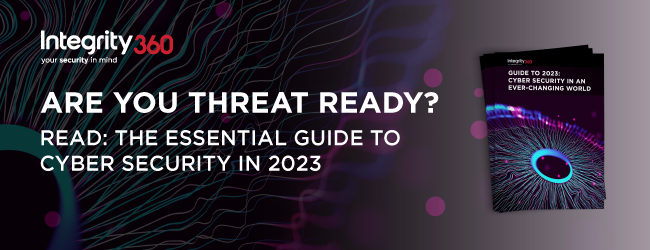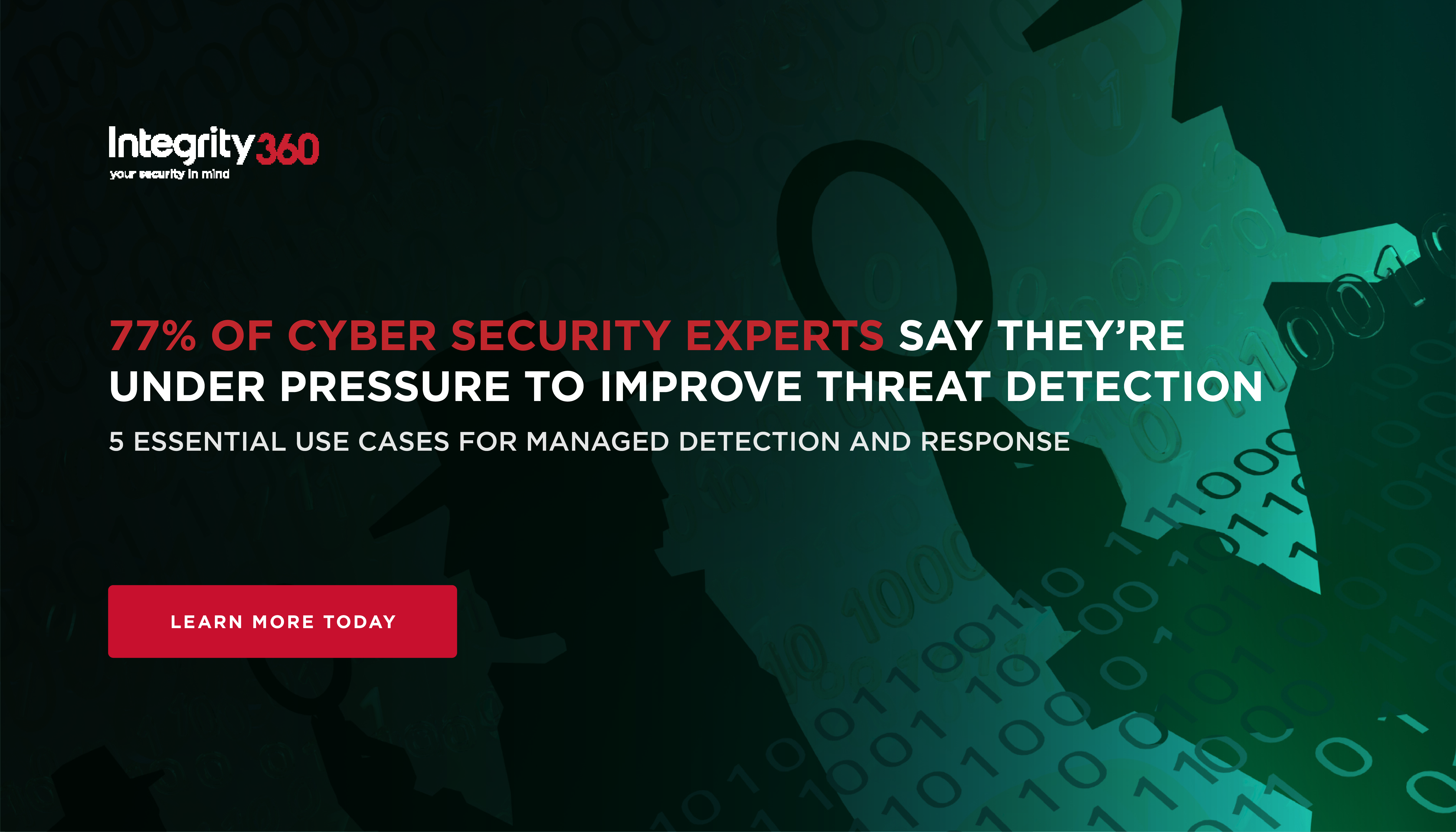As a cyber security professional, you know that choosing the right threat detection and response solution is crucial to protecting your organisation from advanced persistent threats and never-before-seen malware. That's where Endpoint Detection and Response (EDR), Extended Detection and Response (XDR), Security information and event management (SIEM) tools and Managed Detection and Response (MDR) services come in. But what sets these solutions apart, and which one is the best fit for your business? Let's take a closer look.
What is EDR?
EDR stands for Endpoint Detection and Response, and is a technology designed to monitor and safeguard individual devices within your network, such as laptops and servers. Traditional endpoint security solutions are great at detecting known threats, but EDR goes a step further by identifying even the most advanced persistent threats and never-before-seen malware that can slip past regular defences. How does it do this? EDR leverages the power of cyber threat intelligence, machine learning, and advanced file analysis to stay one step ahead of threat actors.
But EDR isn't just reactive - it's predictive. EDR solutions record and store data on queries, behaviours, and security events, allowing your cybersecurity team to detect and analyse suspicious activity over time. In the event of a breach or detection, EDR will contain the malware by isolating it and will analyse it in a safe sandbox environment. EDR also conducts a thorough root cause analysis and aids with faster incident response.
What is XDR?
XDR stands for Extended Detection and Response and is technology that takes a more comprehensive approach to threat detection and response by analysing data from a variety of sources within your environment, including endpoint devices, network traffic, user behaviour, cloud, and from security tools like firewalls and intrusion prevention systems. This broader view allows XDR to detect threats that may not have been visible through any one source alone, such as multi-device attacks or threats outside the endpoint.
What is SIEM?
SIEM is a security management system that uses a combination of security information management (SIM) and security event management (SEM) to provide real-time monitoring and analysis of security-related data. It helps organisations detect potential threats and vulnerabilities, track and log security data for compliance or auditing purposes and automate many of the manual processes associated with threat detection and incident response. It is commonly used in security operation centres (SOCs) for security and compliance management.
What is MDR?
MDR: MDR stands for Managed Detection and Response and is a service rather than a technology, albeit that it may be underpinned by a technology platform to help deliver it. MDR can layer on top of the strengths of EDR, SIEM, and XDR solutions and allows you to outsource the management and monitoring of your security alerts to a team of experts, providing a cost-effective way to boost your threat detection and response capabilities.
Which solution is right for you and your business?
So which solution is the best fit for your business? It really depends on your needs and resources. EDR offers detailed visibility into activity on individual endpoint devices, making it ideal for identifying and responding to threats specific to a single device. However, EDR may not be as effective at detecting threats that involve multiple devices or that occur outside the endpoint, such as network-based attacks or cloud-based threats.
XDR, on the other hand, offers a more comprehensive view of your organisation’s security posture by analysing data from multiple sources. This broader visibility can help you detect threats that may not have been visible through any one source alone, such as multi-device attacks or threats outside the endpoint. XDR can also provide more context and information about a threat, which can be helpful for determining the appropriate response and mitigating the risk of future attacks.
MDR is not an either/or question in this context, it more relates to whether an organisation has the ability to manage the detection and response platform and processes in-house or could benefit from an expert third party provider with the skills, resources, tools, and platforms to get the most out of the detection and response platforms in play.
In-house MDR refers to an organisation's decision to manage their own detection and response efforts. This approach requires the organisation to invest in the necessary tools, technologies, and personnel to effectively detect and respond to cyber threats. Organisations that choose to implement MDR in-house must have the resources and expertise to set up and maintain a comprehensive security operations centre (SOC). This can include hiring a team of cybersecurity experts, acquiring and configuring security tools, and developing associated processes and procedures.
On the other hand, partnering with a third-party provider for MDR allows organisations to outsource their detection and response efforts to a team of experts. These experts are typically highly skilled and experienced in identifying and responding to cyber threats. They have access to the latest tools and technologies and can provide around-the-clock monitoring and response capabilities. This can be a cost-effective option for organisations that don't have the resources or expertise to manage their own MDR in-house.
MDR providers can advise and supply relevant EDR, XDR, and/or SIEM tools that will form the monitoring, analytics, and response layer within the architecture. Some providers mandate proprietary solutions in this regard, whilst others will have more of an Open Vendor framework to enable usage of best-in-breed technology.
Automation
The level of automation and integration in the response process is another factor to consider when choosing between EDR, XDR, and whether or not to partner with an MDR provider. EDR systems typically can more automated in their response actions, as they are focused on protecting a specific endpoint device. This can be useful for organisations that need to take quick and decisive action to contain and mitigate threats, but may not offer as much flexibility or control over the response process.
XDR and may require more manual intervention in the response process, as they provide a broader view of an organisation’s security posture and may require more analysis to determine the appropriate response. This can provide more flexibility and control over the response process but may also require more time and resources to manage.
MDR providers often have a SOAR platform baked into their technology stack and can provide turnkey playbooks that can automate or at least provide guided responses to different categories of detection alerts.
How are EDR and XDR deployed?
In terms of deployment and management, EDR and XDR differ in their approach. EDR solutions are typically deployed on a per-endpoint basis, requiring individual agents running on each device. This can be time-consuming and resource-intensive, especially in large organisations with many endpoint devices. XDR systems are typically deployed as a centralised platform and can analyse data from multiple sources, however, often include endpoint agents as part of the solution.
MDR enables an organisation to leverage the strengths of EDR, XDR, and SIEM and allows organisations to outsource the management and monitoring of their security to a team of experts. This can be a cost-effective way for organisations to improve their threat detection and response capabilities without having to invest in and manage their own security tools. Note that some MDR providers have the capability to manage EDR and XDR platforms as well as run detection and response services, whilst others offer an overlay without taking over management of those platforms. So, it is important to be clear when procuring such services which of those cases apply for each given service proposal.
Any Downsides?
One potential downside of EDR and XDR is that they can generate a larger volume of data and alerts, which can make it more challenging for security teams to prioritise and investigate threats. To address this issue, EDR and XDR solutions often include tools and features for triaging and prioritising alerts, such as machine learning algorithms that can identify high-priority threats or the ability to customise alert thresholds and rules.
The Best Protection from Cyber Threats
EDR, XDR, SIEM and MDR are approaches that can help organisations improve their threat detection and response capabilities. EDR is a technology focused on monitoring and protecting endpoint devices, while XDR technology takes a more comprehensive approach by analysing data from a wide range of sources and providing a holistic view of an organisation’s security posture. MDR is a service rather than a technology and can help an organisation combine the strengths of both EDR and XDR, allowing organisations to outsource the management and monitoring of their security tools to a team of experts. While each approach has its own benefits and limitations, organisations should carefully consider their unique needs and resources when deciding which technology is best for them and whether or not to manage in-house or partner with an MDR provider.
How can an MDR provider help with EDR, XDR and SIEM?
An MDR provider can help organisations with SIEM, EDR, and XDR by providing expert management and monitoring of their security tools and systems.
They can help with EDR by installing and managing EDR software on endpoint devices and monitoring activity at the endpoint level to identify and respond to threats. They can also provide regular updates and maintenance to ensure that EDR software is kept up to date and effective.
When it comes to XDR an MDR provider can provide a centralised platform that can collect and analyse data from multiple sources, including endpoint devices, network traffic, user behaviour, cloud, and security tools such as firewalls and intrusion prevention systems. They can also provide expert analysis and interpretation of this data to identify and respond to threats, as well as provide tools and features for triaging and prioritising alerts.
Managed Detection and Response (MDR) services, which combine EDR, SIEM, and XDR capabilities, allow organisations to outsource the management and monitoring of their security tools to a team of experts. This can be a cost-effective way for organisations to improve their threat detection and response capabilities without having to invest in and manage their own security tools.
EDR, XDR, and MDR are powerful options for improving your organisation’s threat detection and response capabilities. MDR leverages the strengths of the underlying technologies and allows you to outsource the management and monitoring of your security alert investigation and response. Ultimately, the right choice for your business will depend on your specific needs and resources. No matter which solution you choose, EDR, SIEM, and/or XDR, with or without MDR can be valuable additions to your cybersecurity arsenal.
Want to find out more about what priority risks our MDR service can help your organisation mitigate? Contact us today.










